BI in Utilities: The Hidden Cost of Tool Fragmentation
In today’s high-stakes utilities industry, where competition is fierce and the demand for operational efficiency is ever-growing, the ability to make swift, data-driven decisions is a must. Yet, many organizations find themselves entangled in a pervasive challenge: the proliferation of business intelligence (BI) tools. This issue, driven by independent projects and specialized software, does more than complicate workflows; it hinders organizational efficiency, increases costs, and frustrates employees.
A snapshot of the industry landscape
First snapshot: A power and water utility leveraging four different BI tools across the organization—MS Power BI, IBM Cognos, Qlik, and Tableau.
Second snapshot: A power utility project involving the development of 500 gaps, 110 interfaces, 100 operational reports, and 12 datamarts. What is the level of complexity?
A Common struggle: The fragmentation of BI tools
Consider this scenario: A power utility faces an overwhelming landscape of analytics platforms. Tableau is used for sales reporting, Power BI manages financial insights, and dashboards from predictive maintenance software address operational needs. Meanwhile, a separate department insists on using Qlik for their specific projects.
The outcome? A disjointed system:
- Employees spend hours toggling between platforms.
- Data silos lead to conflicting reports and a lack of trust in analytics.
- Analysts struggle to consolidate information, hampering timely decision-making.
This fragmented ecosystem is not an isolated problem. Research from Gartner shows that 65% of medium and large organizations utilize at least three BI tools, and 40% manage more than five.
The hidden costs of a disjointed BI ecosystem
The implications of managing multiple BI tools extend beyond operational inconvenience. They impact the organization at its core, driving up costs and delaying progress:
- Direct financial costs: Rising expenses for licensing and tool maintenance.
- Human resource costs: Prolonged learning curves and duplicated efforts.
- Operational inefficiencies: Delayed decision-making caused by fragmented and inaccessible data.
In today’s competitive environment, the opportunity cost of such inefficiencies can be substantial.
The case for centralized BI Portals
To address these challenges, many organizations are turning to centralized BI portals, also known as content hubs or centralized analytics platforms. These solutions integrate reports, dashboards, and KPIs from disparate BI tools—such as Tableau, Power BI, Qlik, and others—into a single, unified platform.
The advantages of centralized portals are compelling:
- Enhanced governance: Streamline control over data and access permissions.
- Optimized resources: Reduce redundant tools and processes, lowering costs.
- Improved productivity: Allow teams to focus on analysis rather than searching for information.
Solutions like Digital Hive, Zenoptics, and IBM Content Hub exemplify this approach, delivering seamless integration and significant operational gains.
Strategic steps toward BI efficiency
While technology provides a critical foundation, achieving BI efficiency requires a broader strategy. Key steps include:
- Conducting a BI ecosystem audit: Identify redundant or underutilized tools and eliminate overlaps.
- Establishing robust data governance: Align BI tools with organizational goals and policies.
- Fostering user adoption: Provide training to ensure teams can maximize the value of centralized platforms.
By addressing both technical and organizational aspects, companies can unlock the full potential of their BI investments.
Time for Action
The utilities industry operates in a complex and rapidly evolving landscape. As the demand for agility and data-driven decision-making intensifies, the inefficiencies of fragmented BI tools become increasingly untenable.
The question is no longer whether to simplify the BI ecosystem but how soon to act.
Overcoming these challenges is difficult, but the potential benefits justify the investment.
What approach could work best for your organization?
Let’s talk!
Nicole Halm, Chief Sales Officer at Quanam.
